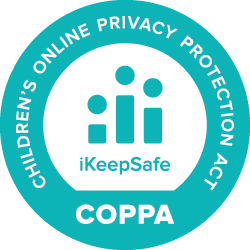Rubber
Picture the attributes of a rubber band or a rubber ball. Did you think stretchy or bouncy? Did you know that the natural version of rubber is called latex? Latex is used in tires that grip the road, and it's what gives elastic that snap.
Resource Title:
Rubber
Description:
Picture the attributes of a rubber band or a rubber ball. Did you think stretchy or bouncy? Did you know that the natural version of rubber is called latex? Latex is used in tires that grip the road, and it's what gives elastic that snap.
Target Grade Level:
Grades K-12
Discipline or Course (Audience):
Science
Time Frame:
One 45-minute session
Suggested Grouping:
Individual
Key Vocabulary:
- Devulcanization: A process that "un-cooks" rubber, making it soft again to be used to make new things.
- Granulate: To crush or chop rubber into tiny pieces, like little grains of sand, so it can be used to make new stuff.
- Latex: A milky juice from rubber trees that is used to make natural rubber.
- Reclaimed Rubber: Rubber that's been taken from old things, like tires, and cleaned up to be used again.
- Synthetic Rubber: Rubber made in factories from chemicals, not from trees.
- Tire Recycling: Taking old tires and turning them into something new instead of throwing them away.
- Vulcanization: A cooking process that makes rubber strong and stretchy.
Special Population Accommodations:
- Follow district guidelines for supporting ELL students. Consider sensory supports such as physical movement or podcasts. Pre-teach vocabulary within the content.
- Follow district guidelines for supporting GT students. Gifted students thrive when given choices and opportunities to explore the complexities of the content. Encourage students to explore across disciplines. Provide executive functioning support and check-in as needed.
- Follow required accommodations based on student IEPs.
Remote Learning Adaptations:
This resource is appropriate for remote learning; no adaptations or modifications are necessary.
STUDENT CONTENT BELOW THIS LINE
Picture the attributes of a rubber band or a rubber ball. Did you think stretchy or bouncy? Did you know that the natural version of rubber is called latex? It's amazing! Latex is used in tires that grip the road, and it's what gives elastic that snap. And many people are allergic to latex. Have you ever gone to the doctor and they've asked if you have a latex allergy before they put on gloves? Latex can even be found in mouse pads, the soles of your shoes, traffic cones, or railroad crossing panels.
Natural rubber is sometimes called India rubber or caoutchouc (cow-chook). It is an elastic hydrocarbon polymer, which means its molecules are much like loose pieces of rope. They stretch and fold. The long molecules can no longer vibrate when rubber is stretched, releasing their extra energy as heat.
Natural rubber comes from the sap of tropical trees. Even though synthetic rubber can now be produced, natural rubber still comprises about 28 percent of the rubber used today. It provides essential raw materials for automobile tires.
Figure 1: Shredded tires being recycled
However, growing rubber trees places strains on tropical environments. A rubber tree lives for about 32 years. When it grows, it uses a great deal of water and nutrients, especially during the seasons when water is scarce. Many regions of the world where rubber trees are grown suffer droughts due to climate change. So, reusing the rubber we harvest takes on added importance.
When rubber was first used for products in Europe in the 18th Century, it became an instant fad. But rubber boots were soft in the summer sun and brittle in winter cold. In 1839, Charles Goodyear invented a way to make them more durable.
Vulcanization changes the bonds between rubber’s long molecules, improving its resistance and elasticity at lower temperatures. Carbon black is often added to strengthen the rubber used to make tires.
About 28 percent of today’s tires are made from natural rubber, while synthetic rubber accounts for approximately 50 percent and carbon black represents around 20 percent. However, it's important to note that these percentages may fluctuate based on the price of rubber and ongoing advancements in synthetic rubber development as we strive to use more sustainable materials.
Reflect and Apply:
- Name two properties of rubber.
- Why does natural rubber need special processing before we use it?
- Describe the shape of a rubber molecule.
- What property of rubber makes it good for tires, mouse pads, and tracks?
What Can You Do?
- Encourage your family and friends to support brands that incorporate recycled materials.
- Recycle your old tires!
- Share how recycled rubber can be used to make new materials.
Extension:
Conduct research to create a diagram describing a cycle where natural rubber is used and recycled. One source of information could be: Web Link - How Is Rubber Recycled? | YouTube



